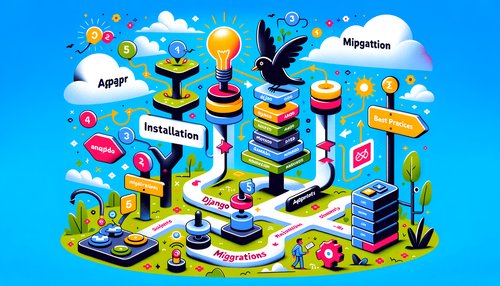As a web developer, you know that Django is one of the best frameworks for web development. It is powerful, versatile, and easy to use. But what if you could take your web development to the next level? What if you could use Django to its fullest potential?
Enter Django class-based views.
Class-based views are a feature of Django that allow developers to create powerful web applications with minimal effort. By using class-based views, you can quickly and easily create complex views that would otherwise take hours to write.
Let’s look at an example. Let’s say you want to create a view that displays a list of products for sale. With class-based views, you can do this with just a few lines of code:
from django.views.generic import ListView
from product.models import Product
class ProductListView(ListView):
model = Product
from django.urls import path
from .views import ProductListView
urlpatterns = [
path('products/', ProductListView.as_view(), name='product_list')
]
As you can see, creating a view with class-based views is incredibly simple. No need to write a lot of code or worry about complicated queries. All you need to do is define the model and the view will take care of the rest.
Class-based views also allow you to easily customize your views. You can add additional filters, order by fields, and even create custom views. This makes it easy to create powerful and dynamic views that can be customized to fit your needs.
Finally, class-based views are incredibly extensible. You can easily add additional functionality to your views by creating custom mixins or writing your own views. This makes it easy to create complex and powerful web applications with minimal effort.
If you’re looking to take your web development to the next level, Django class-based views are the way to go. They’re easy to use, incredibly extensible, and allow you to quickly create powerful and dynamic web applications. So don’t wait any longer – start unlocking the power of Django class-based views today!
Recent Posts

7 months, 2 weeks ago
Unlocking the Power of Terraform: Mastering Conditional Expressions for Smarter Infrastructure Automation

7 months, 2 weeks ago
Unveiling the Future: Navigating the Public Interface of Apache Airflow for Streamlined Workflow Management
Apache Airflow
7 months, 2 weeks ago
Mastering Workflow Automation: Unconventional Apache Airflow How-To Guides for the Modern Data Enthusiast
Apache Airflow
7 months, 3 weeks ago
Mastering the Cloud: Unveiling AWS CloudFormation Best Practices for Seamless Infrastructure Management

7 months, 3 weeks ago
Show All


